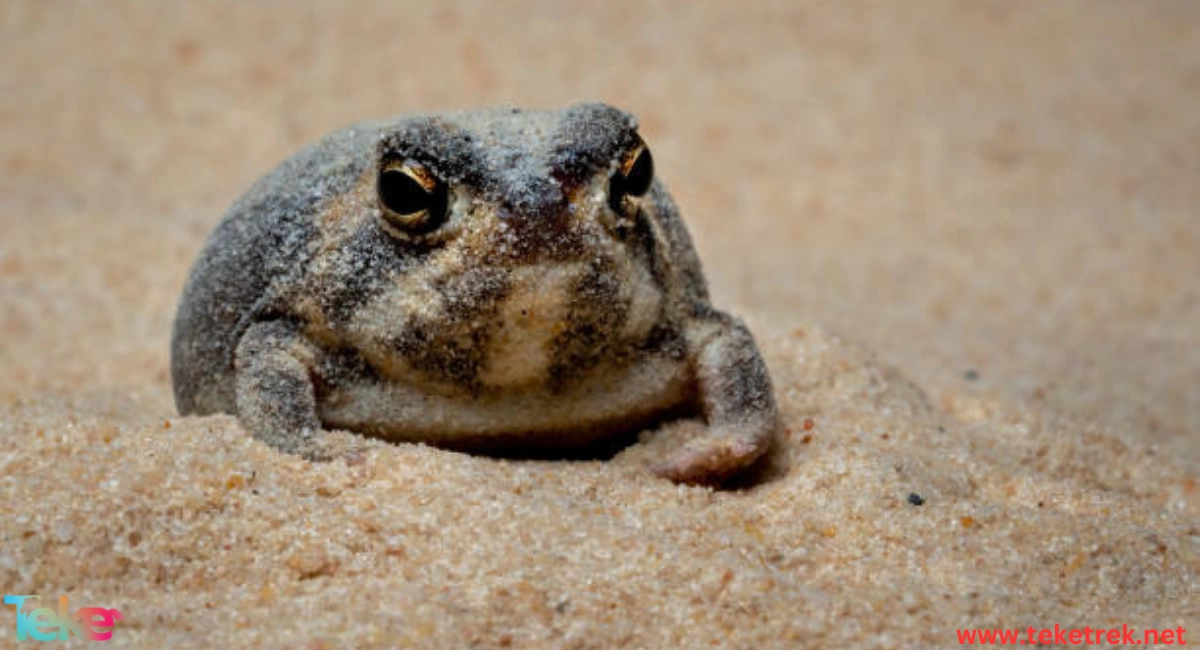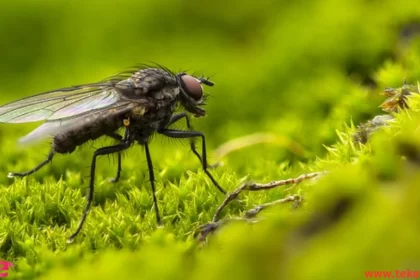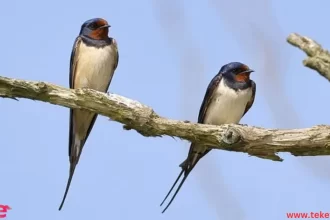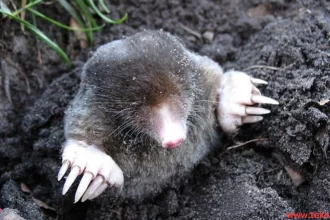Rain Frog is considered the cutest frog in the world!!
The Desert Rain Frog is a type of frog belonging to the family of rain frogs, the order Anura, the class Amphibia.
Let’s learn more about it from teketrek.
Facts about the Desert Rain Frog
It is scientifically known as Breviceps macrops.
The Desert Rain Frog is found in Namibia and South Africa, and its habitat is the narrow strips of sandy beaches.
These species of frogs spend their days in burrows that can reach a depth of up to eight inches, and because, like other amphibians, they need water, they are attracted to wet sand.
The Desert Rain Frog has the ability to adapt to harsh, hot, and dry environmental systems.
Instead of swallowing water like marsh frogs, Desert Rain Frogs absorb moisture from the sands.
They dig in places where the sand is moist, absorbing moisture during their rest, doing so through the transparent correction on their lower sides.
The Desert Rain Frog emits a sound resembling that of a cat, and it is said to be the cutest frog in the world.
Male Desert Rain Frogs tend to have highly fringed vocal sacs.
Male desert rain frogs tend to have a strongly wrinkled filamentous area

The Desert Rain Frog specification
The length: The Desert Rain Frog is relatively small, ranging in length from two to five inches.
The body: has a spherical body shape.
The eyes: The Desert Rain Frog does not have a facial mask, but it has prominent, exceptionally large eyes.
The back: Smooth warts are found across the back of the frog.
The color: the coloring of the Desert Rain Frog is predominantly yellow and brown, although most pictures make it appear lighter. This color helps it to blend into its environment, hiding from predators.
The skin: the most important fact is that the Desert Rain Frog carries a layer of sand that usually sticks to its body and skin.
The blood vessels: Additionally, the Desert Rain Frog is characterized by transparent blood vessels in its hind and middle regions.
Feet: as well as having soft, paddle-like feet with thick belts.
https://teketrek.net/the-nano-leaf-chameleon-insect/
Where do rain frogs live
The Desert Rain Frog lives in Namibia and South Africa, and it is concentrated around Namakwa land.
Unlike many frogs, the Desert Rain Frog in the desert does not live near water bodies with its offspring.
What do rain frogs eat
Desert Rain Frogs are carnivorous, feeding on a variety of animals depending on their size, such as spiders, worms, as well as insects like mites, flies, beetles, and crickets.
Medium-sized frogs feed on small fish, large worms, and grasshoppers, while larger frogs, reaching the size of a mammoth, feed on small snakes, mice, rats, as well as small turtles and other small frogs.
https://teketrek.net/the-fascinating-world-of-glass-frogs-natures-transparent-wonder/
Reproduction in the Desert Rain Frog
The breeding season for Desert Rain Frogs lasts from late summer to early autumn, and being nocturnal creatures, the mating cycle always occurs after dark.
Male Desert Rain Frogs emit a long, high-pitched whistle, which serves as an invitation for females to mate.
After mating, the female Desert Rain Frog buries herself in the ground and lays between 12 to 40 eggs at once.
An interesting fact about newly hatched frog lets is that there is no familiar tadpole stage.
These frogs transition directly from the egg stage to adulthood, meaning there is no growth period or dependence on either parent.
The female Desert Rain Frog buries herself in the soil again, waiting for rainfall, and the male buries himself with her to fertilize the eggs underground.
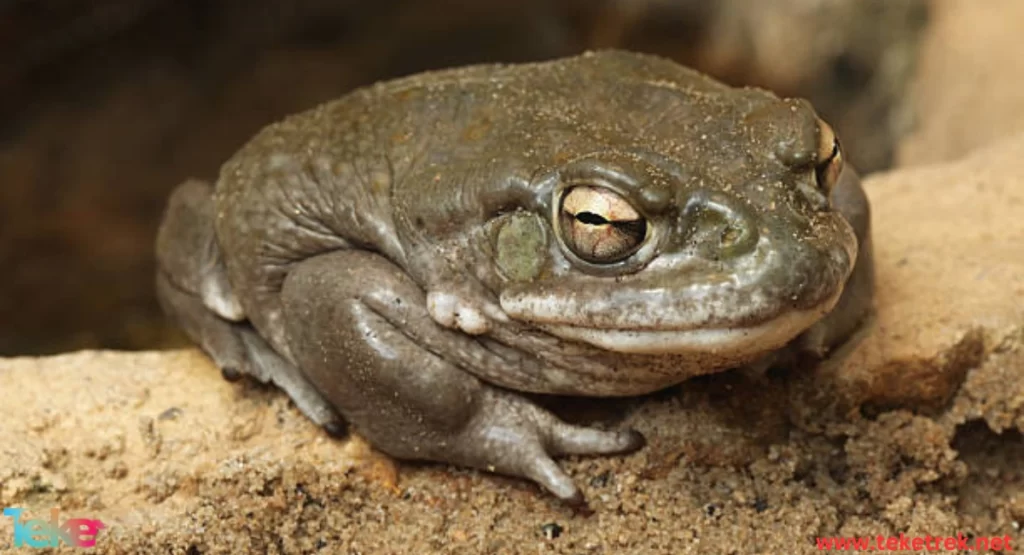
FAQs about Rain Frogs
How long do Desert Rain Frogs live?
The average lifespan of Desert Rain Frogs typically ranges from four to 15 years.
What predators feed on Desert Rain Frogs?
Cape Eagle Owls, Martial Eagles, African Harrier-Hawks, Cinnamon-breasted Warblers, and Marsh Owls are considered predators of Desert Rain Frogs.
Additionally, Wolf, Honey Badgers, Hartmann’s Zebra, and various antelope species are also predators.
How does the Desert Rain Frog communicate with other animals and its own species of frogs?
Desert Rain Frogs produce a distinctive sound, especially when threatened, and they use a unique loud scream for defense with high intensity.
Furthermore, the Desert Rain Frog has its own communication system.
It tends to scream in long whistles that rise across the sand dunes.
Usually, these are males initiating a call and receiving responses
Are desert rain frogs noisy?
Desert rain frogs produce a distinctive squeaky sound, similar to a chew toy. They use this sound to express anger or to scare away predators, unlike other frogs that croak to attract mates.
Can desert rain frogs jump?
Desert rain frogs cannot jump. Their legs are too short for hopping, so they primarily walk.
Can desert rain frogs swim?
Desert rain frogs can swim when it rains. After spending long periods in a dormant state during dry conditions, they emerge to swim in temporary rainwater pools and oases.
Are rain frogs poisonous?
Yes, it is poisonous.
Are Rain frogs endangered?
Yes, it is endangered.
In conclusion, habitat loss and fragmentation, urbanization, and habitat degradation all lead to declining populations and force the frog to narrow its habitats.
It is important to conserve habitats to protect the Desert Rain Frog from extinction.
References
Wikipedia

